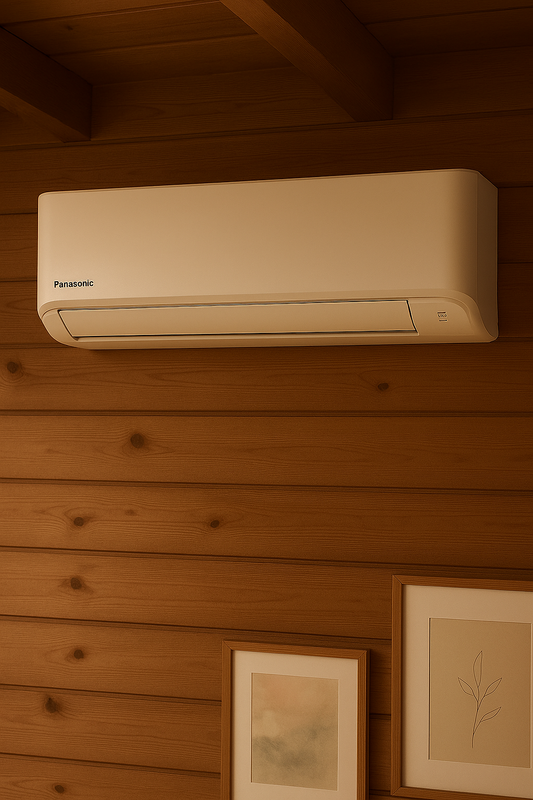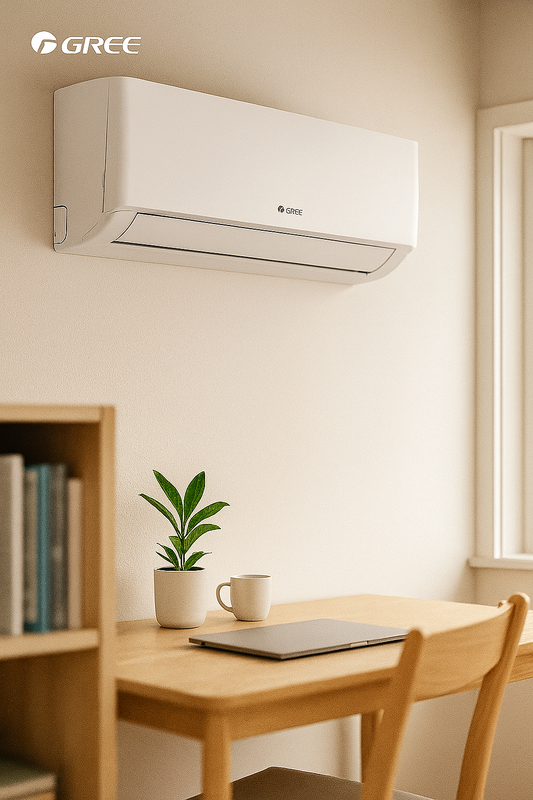Installation av bergvärmepump
Inledning
Installation av bergvärmepump är en populär metod för att skapa hållbar och kostnadseffektiv uppvärmning och kylning av bostäder och kommersiella byggnader. I denna artikel kommer vi att utforska processen för installation av bergvärmepumpar, dess fördelar, användningsområden och relaterade tekniker.
Definition och bakgrund
En bergvärmepump utnyttjar den naturliga värmen i marken för att producera värme och varmvatten i byggnader. Genom att utnyttja den konstanta temperaturen under markytan kan bergvärmepumpar erbjuda en energieffektiv och miljövänlig uppvärmningslösning. Installationen av en bergvärmepump innefattar vanligtvis borrning av hål i marken för att installera en kollektor och anslutning av värmepumpen till det befintliga värmesystemet.
Fördelar och användningsområden
Installation av bergvärmepumpar erbjuder flera fördelar, inklusive minskade energikostnader, låg miljöpåverkan och konstant tillgång till värme och kyla. Denna teknik är lämplig för både nybyggnation och renovering av befintliga byggnader. Bergvärmepumpar kan användas för uppvärmning, kylning och produktion av varmvatten.
Relaterade tekniker, begrepp eller variationer
Det finns flera variationer av bergvärmepumpar, inklusive horisontella och vertikala system beroende på tillgänglig markyta. Dessutom kan bergvärmepumpar kombineras med solfångare för att ytterligare minska energiförbrukningen. Värmepumpar kan också integreras med smarta hem-system för ökad kontroll och effektivitet.
Vanliga frågor (FAQ)
-
Hur djupt borras hålen för en bergvärmepump?
Det beror på markens egenskaper och den specifika installationen, men hålen kan vanligtvis borras mellan 100-200 meter djupt.
-
Är bergvärmepumpar lämpliga för alla typer av byggnader?
Ja, bergvärmepumpar kan anpassas för både bostäder och kommersiella byggnader, oavsett storlek eller ålder.
-
Vilken typ av underhåll kräver en bergvärmepump?
Bergvärmepumpar kräver minimalt underhåll, vanligtvis en årlig kontroll och rengöring av systemet.
Sammanfattning
Installation av bergvärmepumpar erbjuder en hållbar och kostnadseffektiv lösning för uppvärmning och kylning av byggnader. Genom att utnyttja markens naturliga värme kan bergvärmepumpar minska energikostnader och miljöpåverkan samtidigt som de erbjuder pålitlig värme och kyla året runt.
Installation Process
The installation process for a geothermal heat pump involves several key steps. Firstly, a site survey is conducted to determine the most suitable location for the ground loop. Following this, boreholes are drilled to accommodate the ground loop, and the piping is installed. The heat pump unit is then connected to the ground loop and the building's heating or cooling distribution system. Finally, the system is tested and commissioned to ensure optimal performance.
Energy Efficiency
Geothermal heat pumps are renowned for their high energy efficiency. By harnessing the stable temperature of the earth, these systems can significantly reduce energy consumption and associated costs. The consistent performance of geothermal heat pumps also contributes to a more sustainable and environmentally friendly heating and cooling solution.
Case Study: Residential Installation
In a residential setting, the installation of a geothermal heat pump can lead to substantial energy savings. For example, a homeowner in a moderate climate may experience a significant reduction in heating and cooling expenses while benefiting from a reliable and consistent indoor climate. The initial investment in a geothermal heat pump system can often be recouped through long-term energy savings.
Enhanced Control and Monitoring
Modern geothermal heat pump systems can be integrated with smart home technology, allowing users to remotely monitor and adjust their heating and cooling settings. This level of control not only enhances user comfort but also contributes to overall system efficiency and performance.
Environmental Impact
By utilizing the earth's natural heat, geothermal heat pumps offer a low carbon footprint heating and cooling solution. The reduction in greenhouse gas emissions and reliance on non-renewable energy sources makes geothermal heat pumps a favorable choice for environmentally conscious individuals and organizations.
System Maintenance
Proper maintenance is essential for ensuring the long-term performance of a geothermal heat pump system. Regular inspections, filter changes, and system cleanings are recommended to uphold efficiency and prevent potential issues. Professional servicing can further optimize the system's operation and longevity.
Commercial Applications
Geothermal heat pumps are suitable for various commercial settings, including office buildings, schools, and industrial facilities. The scalability and adaptability of these systems make them a practical choice for meeting the diverse heating and cooling needs of commercial structures while delivering notable energy efficiency and cost savings.
Financial Incentives
Many regions offer financial incentives, tax credits, or rebates for the installation of geothermal heat pump systems. These incentives aim to promote the adoption of renewable energy technologies and make geothermal heating and cooling solutions more accessible to residential and commercial property owners.
Geothermal Heat Pump Sizing
The proper sizing of a geothermal heat pump system is crucial to ensure optimal performance and energy efficiency. Factors such as building size, insulation, and climate conditions are taken into account during the sizing process to determine the most suitable system capacity for effective heating and cooling.
System Design and Planning
Effective system design and planning are essential for the successful installation of a geothermal heat pump. Factors such as building layout, ground conditions, and heat pump specifications must be carefully evaluated to optimize system performance and longevity. Professional engineers and installers utilize advanced software and methodologies to design bespoke geothermal heat pump systems tailored to specific project requirements.
Ground Loop Configuration
The configuration of the ground loop system can vary based on available space and geological characteristics. Horizontal loops are typically installed where land area is ample, while vertical loops are employed in cases with limited space. Additionally, pond/lake loops may be utilized where bodies of water are present. The selection of the most suitable ground loop configuration is crucial for maximizing heat exchange efficiency.
Supplementary Heating and Cooling
In regions experiencing extreme temperatures, supplementary heating and cooling systems may complement the geothermal heat pump to meet peak demands. Electric resistance heating or air-source heat pumps can be integrated to provide additional heating during extremely cold periods, ensuring consistent comfort levels within the building.
Remote Monitoring and Diagnostics
Advanced geothermal heat pump systems offer remote monitoring and diagnostics capabilities, allowing technicians to assess system performance, detect anomalies, and perform troubleshooting tasks from a centralized location. This proactive approach to system management enhances reliability and reduces maintenance downtime.
Hydronic Distribution Systems
Hydronic distribution systems, utilizing water as a heat transfer medium, are commonly integrated with geothermal heat pump installations to deliver efficient heating and cooling. Radiant floor heating, radiant panels, and fan coil units are examples of hydronic distribution technologies that seamlessly complement the capabilities of geothermal heat pumps.
Case Study: Commercial Retrofit
In a commercial retrofit scenario, the installation of a geothermal heat pump can lead to substantial reductions in operational costs and carbon emissions. By replacing traditional HVAC systems with geothermal technology, businesses can achieve long-term sustainability goals while benefiting from enhanced financial returns and occupant comfort.
Performance Monitoring and Optimization
Continuous performance monitoring and periodic optimization are integral to maintaining the efficiency and reliability of geothermal heat pump systems. Data analytics and performance metrics enable operators to identify trends, assess energy consumption, and implement adjustments to maximize system performance.
Geothermal Heat Pump Economics
An economic assessment of geothermal heat pump installations encompasses factors such as initial investment, operational savings, maintenance costs, and available incentives. Through comprehensive financial analysis, property owners can ascertain the long-term economic benefits and return on investment associated with geothermal heat pump technology.
Geothermal Heat Pump Standards
Industry standards and regulations govern the design, installation, and operation of geothermal heat pump systems to ensure safety, efficiency, and environmental responsibility. Adherence to established standards, such as ASHRAE and International Ground Source Heat Pump Association (IGSHPA) guidelines, is fundamental in delivering high-quality and compliant installations.





